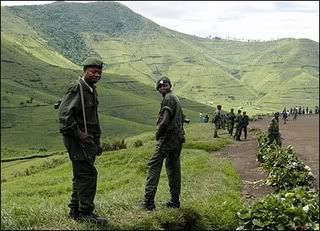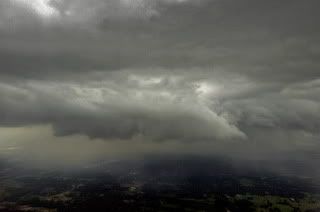
After researching more about the historical and cultural context of the Democratic Republic of Congo, I am able to reexamine the photo labeled "Tales of Rape" in a new light. The Democratic Republic of Congo is located in central Africa, and is bordered by nine countries including Sudan, Rwanda, and Uganda. Established in 1908 as a Belgian colony and then gaining its independence in 1960 under the name Republic of the Congo, the country's history has been characterized by political and social instability. In 1997, the Mobutu regime was overthrown with the support of Rwanda and Uganda. Following this, a man by the name of Laurent Kabila took over the country as a democratic leader, renaming the country under its current title. Nevertheless, Rwanda and Uganda intervened a second time in 1998 following the switch of government, which caused further fighting to break out. Finally, in 2003, a peace agreement was reached between the many parties, but terrible acts of violence continue to mar the lives of native people in the country.
One of the most tragic themes throughout the Congo's history of conflict has been the hundreds of thousands of rapes that have occurred. With the large number of armed forces commuting throughout the country, many male soldiers have taken advantage of local women as well as girls. Particularly noted have been the thousands of victims in the eastern part of the country. In the midst of a financial crisis, many women and girls have either volunteered or been forced to join the national army. After spending years living with male soldiers, many of these females tell of how they were raped. Despite their age or desires to resist the men, soldiers would come in, one after another, and do anything they wanted with the women. A weak and exposed self-conscious was only one side effect of these actions, while pregnancies produced many more complications.
With all of this historical information in mind, my perception of the original photograph has changed slightly. Although I knew that the girl in the picture was probably raped, I now know that she was a member of the national army when she was taken advantage of several times a day. This more or less explains her gesture in the photo, and gives a reason for the photographer to frame her in the manner that she did. It also explains the dark colors of the photo, which mirror the dark emotions overflowing from her soul. The girl eventually escaped the army and was living with her family when the picture was taken, her home being the background of the photo. Furthermore, the author may have purposefully incorporated the dark room to the left as a symbol for the dark past that she is so desperately trying to forget. As far as showing the wall, its naked condition depicts just how poor this family is, which in turn explains the girl's need to join the army in the first place.
Works Cited
"BBC NEWS: Photo journal: Tales of rape in DR Congo." BBC NEWS, News Front Page. 2007. 17 Feb. 2010
"CIA - The World Factbook -- Congo, Democratic Republic of the." Welcome to the CIA Web Site Central Intelligence Agency. 15 Jan. 2010. 18 Feb. 2010 .
